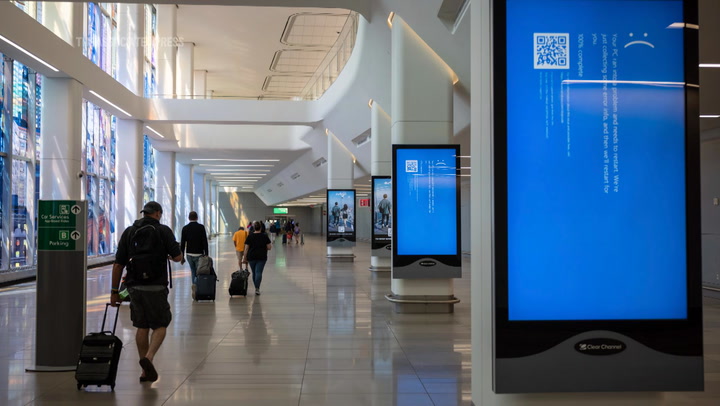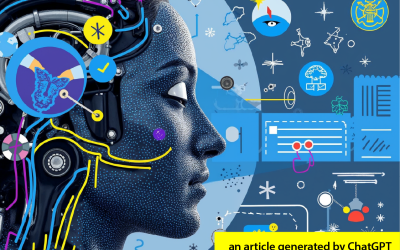
23 Jul, 2024
Just a few days ago, on July 19th, 2024, Windows 7 and above systems running CrowdStrike’s Falcon sensor experienced an unprecedented glitch. A faulty channel file the culprit is Channel File 291(file named ‘C-00000291-*.sys’) caused kernel instability, resulting in a widespread Blue Screen of Death (BSOD) loop. This incident marked the largest global IT outage in history.
The file, intended to enhance security by addressing malicious misuse of named pipes, was served between 4 and 5 AM UTC and affected an estimated 8.5 million Windows devices worldwide. The BSOD loop left millions of systems incapacitated, requiring users to boot into safe mode to delete the faulty file or use Microsoft’s remediation scripts. Bitlocker-encrypted devices added another layer of complexity, necessitating decryption keys for resolution. Millions of enterprise systems crashing had cascading outages across multiple industries, including disruptions in manufacturing, air travel, and hospitals.
But is CrowdStrike’s outage truly the worst global IT disaster of the decade?
Here are some other notable global IT outages and their downtime:
- Amazon Web Services (AWS) – February 2017
Downtime: Several hours
Impact: Affected major websites and services relying on AWS S3, including Netflix, Reddit, and Quora.
- Google Cloud – March 2020
Downtime: Approximately 3 hours
Impact: Disrupted services for Google Cloud customers and services like Gmail, YouTube, and Google Drive.
- Facebook – October 2021
Downtime: About 6 hours
Impact: Facebook, Instagram, WhatsApp, and Oculus services were down worldwide.
- Microsoft Azure – September 2018
Downtime: Around 14 hours
Impact: Affected Azure services, impacting businesses using Microsoft’s cloud infrastructure.
- Slack – June 2020
Downtime: Approximately 1.5 hours
Impact: Slack users were unable to send messages or use the platform effectively.
- Twitter – July 2019
Downtime: Around 1 hour
Impact: Users experienced issues accessing Twitter and tweeting.
- Netflix – June 2016
Downtime: About 2 hours
Impact: Netflix streaming services were down, affecting viewers globally.
- GitHub – October 2018
Downtime: Approximately 24 hours (intermittent issues)
Impact: Developers and companies relying on GitHub for version control and repository hosting faced disruptions.
- Salesforce – May 2019
Downtime: About 15 hours
Impact: Affected services for customers using Salesforce’s cloud-based CRM tools.
- Zoom – August 2020
Downtime: Approximately 4 hours
Impact: Disrupted video conferencing services, impacting remote work and meetings globally.
These incidents reveal the significant disruptions that IT outages can cause, affecting millions of users and critical business operations. The severity and duration of these outages highlight the challenges in maintaining the reliability of large-scale IT infrastructures.
As we forge ahead with advanced tech security, understanding these systems and remaining vigilant is crucial. Crises like these may be inevitable, but are we prepared to tackle them swiftly? Experts agree that advanced technology is a double-edged sword—it all depends on how well we wield it.
Related Articles
The Rise of AI-Powered Drug Discovery: A Revolution in Healthcare
In the realm of healthcare, artificial intelligence (AI) is rapidly transforming the way drugs are discovered and developed. Recent advancements in AI have enabled researchers to accelerate the process of identifying promising drug candidates, optimizing clinical trials, and personalizing treatments.
The Rise of Custom AI Solutions and Generative AI Across Industries
Artificial Intelligence (AI) is reshaping industries with unprecedented speed, and recent developments highlight a growing trend: businesses are moving from generic AI tools to building custom AI solutions tailored to specific industries and needs. This shift not only boosts productivity but also unlocks new avenues for innovation and higher returns on investment (ROI).
The Dawn of AI-Powered Holograms: A New Dimension of Human-Machine Interaction
Recent advancements in artificial intelligence (AI) and augmented reality (AR) have paved the way for a groundbreaking technology: AI-powered holograms. These lifelike digital projections are poised to revolutionize various industries, from entertainment and education to healthcare and business



